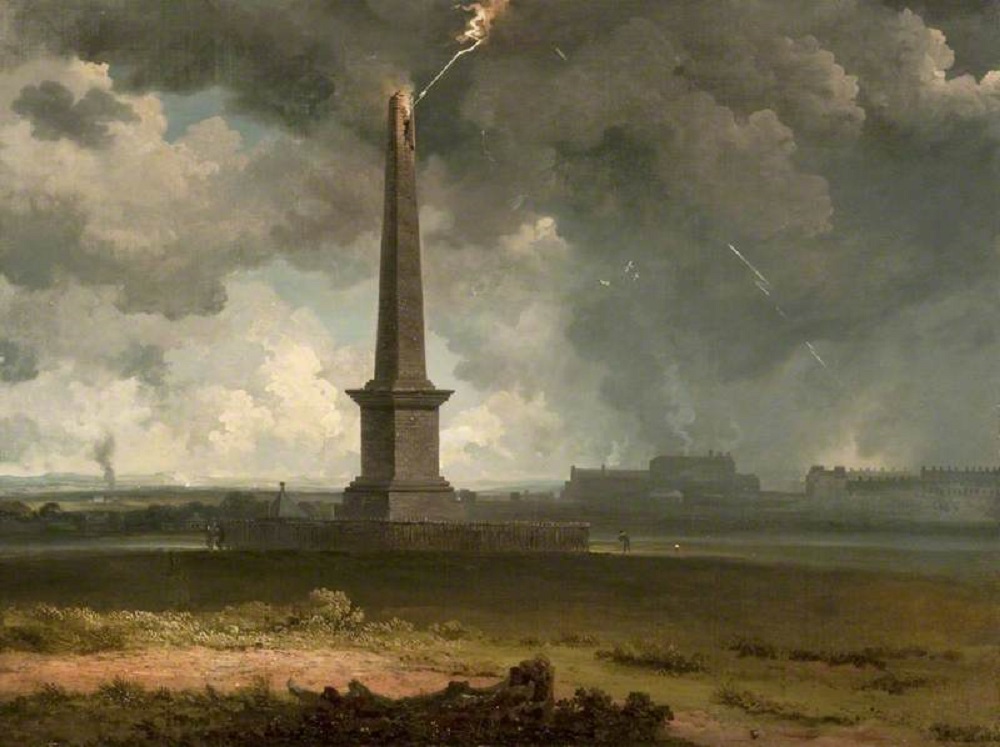Adam Smith and Cultural Memory
Published: 6 March 2023
How and why do we remember Adam Smith, and what meaning does this memory hold?

By Dr Craig Lamont, Lecturer in Scottish Studies (Scottish Literature), School of Critical Studies, University of Glasgow
As a scholar of Scottish Literature and History, it is plain to see how Adam Smith’s ideas have influenced a great many writers and thinkers through how often his name is cited. The connection to Robert Burns is but one example, explored in the past year by my colleagues in Scottish and English Literature. Smith subscribed to Burns’s second edition of Poems, Chiefly in the Scottish Dialect (Edinburgh: 1787) and Burns records having read Smith’s Theory of Moral Sentiments (1759). Smith's theories of sympathy are particularly interesting in our reading of Burns’s famous poems: a clear link that their thinking often aligned. But it is one thing to trace a line of 'reception' from Smith's works through the writings of Scotland's other famous names, and this has been done very well. Going further, people often ask why have Burns and Smith been remembered so well around the globe? What is their staying power? Were they simply 'better' at poetry (Burns) and philosophy (Smith) than others? The answer, of course, is no. It is never this simple.
As a scholar of memory, then, I find myself probing these questions directly, looking to see what tangible evidence can be found. How many monuments do these figures have? Who put them there, and why? With Burns, this question has been asked by many, resulting in projects, events, and books filled with answers. At the University of Glasgow we even have a free online course looking at this very question. With Smith, we are still in a bit of a tangle. One could argue that Smith is not as 'marketable' (pun intended) as Burns, or any other Romantic-era writer who lived a dramatic – and brief – life.
Let us try a simple experiment which will maybe outlast the life of this blog. In your search engine, enter 'Adam Smith'. When I type his name into Google, there is a drop-down heading with the question, 'What was Adam Smith best known for?' The answer provided – at the time of writing – by investopedia.com is "He is considered the father of modern economics. Smith is most famous for his 1776 book, The Wealth of Nations. Smith’s writings were studied by 20th-century philosophers, writers, and economists." That is, of course, an answer, and one which might still reflect the most commonly associated shibboleths with Smith's name. Going beyond this veneer, this initial question of 'Who is Adam Smith?' is to enter the fray of memory studies.
In my PhD thesis and subsequent book, The Cultural Memory of Georgian Glasgow (2021), I made an effort to track the physical manifestations of Smith and to contemplate whether or not their presence made a difference to his legacy today. Reflecting on this now I think my stance is: they do, but not in any radical way. As a field, memory studies helps us make sense of historical moments and sudden change, not just by looking at the historical evidence but by considering the layering of generational memories about those facts. The monuments, memorials, and popular culture which perpetuate a narrative about historical events, or moments, is part of what constitutes memory studies. You can also apply this to a person. There are very good studies on other Scottish Enlightenment figures such as James Watt (MacLeod, 2007), probing how their fame reached fever-pitch, and how it fizzled out.
In my surveys of Smith's 'cultural memory' (ie. the material – and collectively considered – legacy) I find a complicated, rather uncertain figure, despite all the grand claims on either side of political divides. We know what Smith wrote, but the destruction, by his own order, of volumes of manuscripts also means we do not have the deepest of insights into what he thought—or prepared to publish. We also have very few reliable likenesses to use in picturing Smith. This creates a sort of vacuum, into which his chief and most renowned works have been spinning for centuries, being grabbed by right and left-wing idealists (See Craig Smith’s paper 'Adam Smith: Left or Right?' in Political Studies 61 (2012)). There are busts and statues of Smith in his birthplace Kirkcaldy, in Glasgow, Edinburgh, London, and Vienna. There are also modern works in the United States, abstractly representing Smith’s impact on economic history. People generally know who Smith was and what he wrote, but even a brief glance across this terrain of monuments shows a sense of… wanting more.
In future years I hope to probe this question further. I want to ask if Smith’s enshrined memorials in the University of Glasgow have the same impact as those in public spaces, and to what extent these 300-year anniversary celebrations, including these blogs by University of Glasgow academics, help us advance Smith – and Memory – Studies for the better.
Image credit: 'The Nelson Monument on Glasgow Green Struck by Lightning' circa 1810 by John Knox. In the collection of Glasgow Life Museums, published on Art UK and reproduced under Creative Commons Attribution-NonCommercial-NoDerivatives licence
More resources
Artefacts of Adam Smith at Glasgow University
First published: 6 March 2023
In this Adam Smith and My Discipline series a range of University of Glasgow academics explore the impact of Adam Smith’s scholarship on their fields of work and its relevance for these disciplines today.
Join the conversation
- Follow #AdamSmith300 on Twitter

